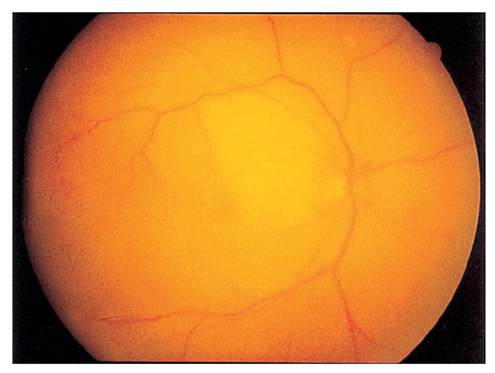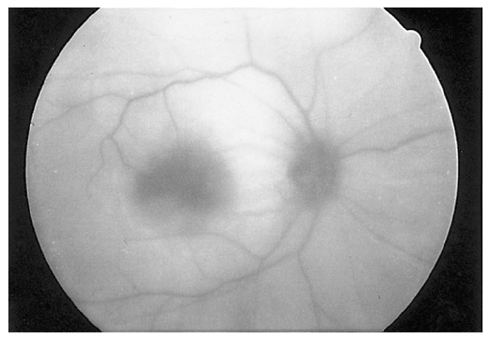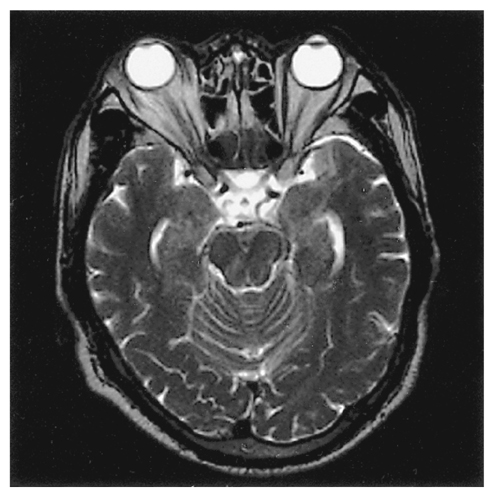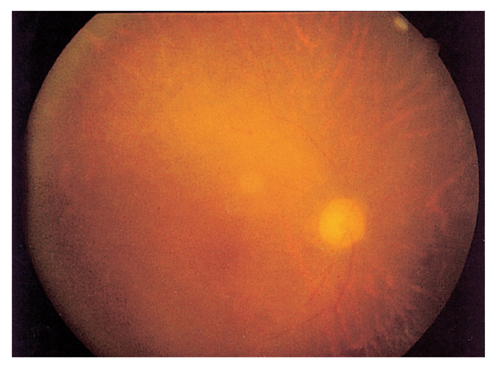Korean J Ophthalmol.
2006 Jun;20(2):139-142. 10.3341/kjo.2006.20.2.139.
Visual Loss in One Eye after Spinal Surgery
- Affiliations
-
- 1Department of Ophthalmology, Yeungnam University College of Medicine, Daegu, Korea. junhyuk_son@hanmail.net
- KMID: 1099051
- DOI: http://doi.org/10.3341/kjo.2006.20.2.139
Abstract
- PURPOSE: To report a patient who developed an unusual combination of central retinal artery occlusion with ophthalmoplegia following spinal surgery in the prone position. METHODS: A 60-year-old man underwent a cervical spinal surgery in the prone position. Soon after recovery he could not open his right eye and had ocular pain due to the general anesthesia. Upon examination, we determined that he had a central retinal artery occlusion with total ophthalmoplegia. RESULTS: Despite medical treatment, optic atrophy was still present at the following examination. Ptosis and the afferent pupillary defect disappeared and ocular motility was recovered, but visual loss persisted until the last follow-up. CONCLUSIONS: A prolonged prone position during spinal surgery can cause external compression of the eye, causing serious and irreversible injury to the orbital structures. Therefore, if the patient shows postoperative signs of orbital swelling after spinal surgery the condition should be immediately evaluated and treated.
MeSH Terms
-
Visual Acuity
Severity of Illness Index
Retinal Artery Occlusion/*complications/diagnosis
Postoperative Complications
Ophthalmoplegia/*complications/diagnosis
Neck Injuries/diagnosis/*surgery
Middle Aged
Male
Magnetic Resonance Imaging
Laminectomy/*adverse effects
Humans
Fundus Oculi
Follow-Up Studies
Fluorescein Angiography
Diagnosis, Differential
Cervical Vertebrae/injuries/*surgery
Blindness/*etiology
Figure
Reference
-
1. Brown GC, Magargal LE, Shields JA, et al. Retinal arterial obstruction in children and young adults. Ophthalmology. 1981. 88:18–25.2. Wolfe SW, Lospinuso MF, Burke SW. Unilateral blindness as a complication of patient positioning for spinal surgery. A case report. Spine. 1992. 17:600–605.3. Hollenhorst RW, Svien HJ, Benoit CF. Unilateral blindness occurring during anesthesia for neurosurgical operations. Arch Ophthalmol. 1954. 52:819–830.4. West J, Askin G, Clarke M, Vernon SA. Loss of vision in one eye following scoliosis surgery. Br J Ophthalmol. 1990. 74:243–244.5. Halfon MJ, Bonardo P, Valiensi S, et al. Central retinal artery occlusion and ophthalmoplegia following spinal surgery. Br J Ophthalmol. 2004. 88:1350–1352.6. Warner ME, Warner MA, Garrity JA, et al. The frequency of perioperative vision loss. Anesth Analg. 2001. 93:1417–1421.7. Williams EL, Hart WM Jr, Tempelhoff R. Postoperative ischemic optic neuropathy. Anesth Analg. 1995. 80:1018–1029.8. Myers MA, Hamilton SR, Bogosian AJ, et al. Visual loss as a complication of spine surgery. A review of 37 cases. Spine. 1997. 22:1325–1329.9. Stevens WR, Glazer PA, Kelley SD, et al. Ophthalmic complications after spinal surgery. Spine. 1997. 12:1319–1324.10. Brown RH, Schauble JF, Miller NR. Anemia and hypotension as contributors to perioperative loss of vision. Anesthesiology. 1994. 80:222–226.11. Katz DM, Trobe JD, Cornblath WT, Kline LB. Ischemic optic neuropathy after lumbar spine surgery. Arch Ophthalmol. 1994. 112:925–931.12. Grossman W, Ward WT. Central retinal artery occlusion after scoliosis surgery with a horseshoe headrest. Case report and literature review. Spine. 1993. 18:1226–1228.13. Slocum HC, O'Neal KC, Allen CR. Neurovascular complications from malposition on the operating table. Surg Gynecol Obstet. 1948. 86:729–734.14. Givner I, Jaffe N. Occlusion of the central retinal artery following anesthesia. Arch Ophthalmol. 1950. 43:197–201.15. Gillan JG. Two cases of unilateral blindness following anaesthesia with vascular hypotension. Can Med Assoc J. 1953. 69:294–296.16. Bradish CF, Flowers M. Central retinal artery occlusion in association with osteogenesis imperfecta. Spine. 1987. 12:193–194.17. Walkup HE, Murphy JD. Retinal ischemia with unilateral blindness-a complication occurring during pulmonary resection in the prone position; report of two cases. J Thorac Surg. 1952. 23:174–175.
- Full Text Links
- Actions
-
Cited
- CITED
-
- Close
- Share
- Similar articles
-
- Visual Loss with Ophthalmoplegia after Prone Position Spinal Surgery
- Transient Unilateral Visual Loss and Ophthalmoplegia Following Spine Surgery in Prone Position
- A Case of Suction Loss During SMILE and a Switch to LASIK
- A Case of Anterior Ischemic Optic Neuropathy
- The Availability of Contrast Sensitivity in Low Vision Patients





